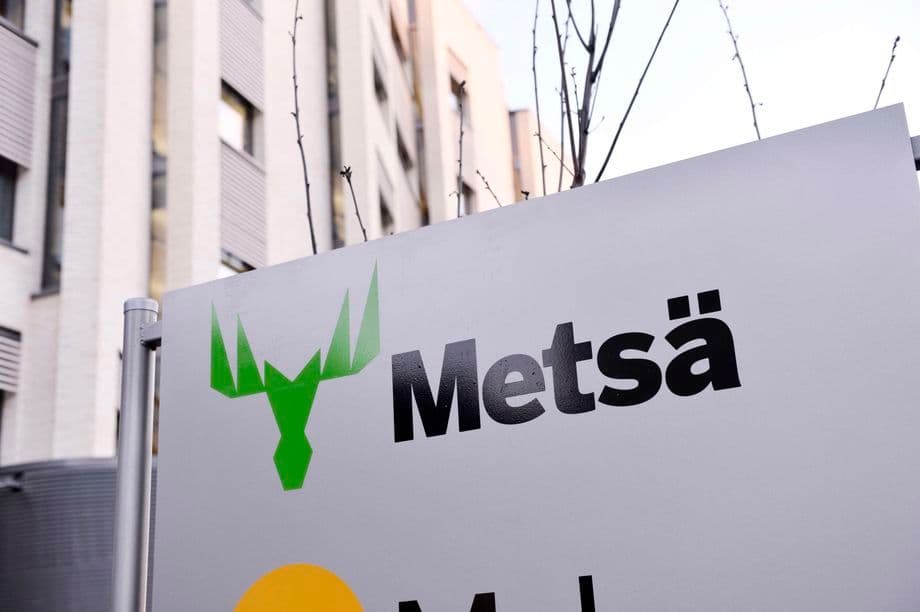Beyond the Pulp Fiction: UPM's Strategic Cuts in a Shrinking Paper World
Explore UPM's strategic shift as it sheds paper capacity amidst digital decline. Uncover the industry's future, costs, and transformation into a bio-economy leader.
The Fading Page: Digitalization's Grip on Print Demand
The pages of traditional print are steadily fading, and global industrial giants like are feeling the profound shift. At the heart of strategic recalibration lies the undeniable impact of digitalization, which has drastically reshaped the landscape for graphic papers. We're talking about a structural overcapacity in the market, particularly for coated magazine paper, where demand has simply plummeted. , along with its competitors, faces a staggering 1.1 million-ton surplus of coated magazine paper capacity in Europe alone. This isn't just a minor blip; it's a fundamental change that has eroded the profitability of Communication Papers division, which, despite being a significant revenue contributor, saw its comparable operating profit collapse from 52 million euros to a mere 5 million in the second quarter. To bolster its long-term competitiveness, is making tough choices, including a significant reduction in its paper production footprint to align with a shrinking, yet still profitable, segment of the market. This involves optimizing production and improving cost efficiency, particularly in logistics and output.
Kaukas Crossroads: The Immediate Impact of UPM's Bold Move
The broader industry trends manifest acutely at mill in , , which now stands at a critical crossroads. plan to permanently cease paper production at by the end of this year, specifically shutting down paper machine PK 1, marks a pivotal moment. This isn't a full abandonment of the site, however; the mill's crucial pulp, sawmill, and biofuels production, along with its research and development operations, will continue uninterrupted. Yet, the impact on the paper division's workforce is substantial. Approximately 220 dedicated employees face an uncertain future as their roles are affected by this decision. While the site currently employs around 950 people, this move would see the number drop to roughly 800. These are difficult decisions, underscored by the six-week change negotiations, which commenced on July 31st, signaling a period of intense dialogue and adjustment for the community, where has historically been a cornerstone employer.
Reshaping the Empire: UPM's Vision Beyond Traditional Paper
The decision, alongside the earlier closure of the mill in , isn't just about cutting costs; it's a clear signal of strategic intent to fundamentally reshape its industrial empire. These closures collectively reduce paper production capacity by 570,000 tons, or 13% of its total, a decisive move to address the persistent market overcapacity and ensure that remaining capacity operates efficiently and profitably. The company's leadership has been transparent about the pressures, with CEO citing global trade uncertainties and tariff announcements impacting demand. While the traditional paper business shrinks, is doubling down on areas with growth potential. The continuity of pulp, sawmill, and particularly biofuels production at highlights this pivot towards a more sustainable, bio-based economy. It’s about focusing resources where future demand and profitability lie, even if it means a painful contraction in legacy segments. The aim is to strengthen long-term competitiveness, not just survive, but thrive in a new industrial era.
The Human Cost and Economic Imperatives: Navigating a New Industrial Era
While strategic pivot makes sound business sense in a challenging market, it's impossible to overlook the very real human cost involved. For , where factories are a vital source of employment, the impact on 220 individuals and their families is significant. This isn't an isolated incident; previous negotiations in May saw layoffs at and , indicating a pattern of necessary workforce adjustments across the company's paper operations. Communication Papers' head, , has acknowledged the profound effect on employees, committing to support them through local practices and open dialogue during the negotiation period. These are the tough realities of navigating a rapidly evolving industrial landscape. Companies, even giants like , must adapt or risk being left behind. The annual savings, estimated at around 23 million euros from the shift alone, underscore the economic imperative driving these painful decisions. It's a stark reminder that the transition to a future-proof, bio-based economy, while essential, comes with profound social challenges that demand careful management and support for those most affected.
Related Articles

Unlocking Resilience: Metsä Group's Strategic Path to Enduring Profitability

Unlocking Resilience: Metsä Group's Strategic Path to Enduring Profitability

The Consolidation Current: Oomi's Strategic Surge Reshapes Finland's Electricity Landscape

The Consolidation Current: Oomi's Strategic Surge Reshapes Finland's Electricity Landscape

Navigating the Storm: Indonesia & Malaysia's Bold Play for Palm Oil Sovereignty

Navigating the Storm: Indonesia & Malaysia's Bold Play for Palm Oil Sovereignty

Alchemy or Illusion? The Sanjeev Gupta Saga and the Future of UK Industry
